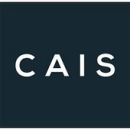Much like a garden, team culture does not blossom overnight.
Growth requires intentional planning and nourishment, with best practices and values sown like seeds plotted in fresh earth. Over time, as roots begin to form and provide teams with a strong foundation, culture flourishes through alignment and belief in a common mission.
At CAIS, Nick Funnell has made it his mission as managing director of product engineering to foster an environment of support, growth and flexibility. When the team culture is maintained, engineers prosper.
“Our culture is a product of our people,” he said. “Much like a good gardener, one should create the conditions for teams to thrive, then nurture and tend to the organization continuously.”
Senior Director of Engineering Brandon LaRue approaches his team’s culture similarly at Zocdoc. By cultivating an atmosphere that empowers individuals through collaboration and autonomy, the cultural “garden” tends itself.
“Zocdoc’s engineering culture works like a well-performing, critical system,” he said. “It has self-healing capabilities.”
Meanwhile, EPAM Systems’ Senior Director of Delivery Management Alena Sletten recommends that engineering leaders embrace mistakes and hone their resilience to keep moving forward. Read on to hear how you can grow your own team of successful engineers.
Zocdoc is an app through which individuals can schedule appointments with healthcare professionals like primary care physicians, dentists and dermatologists.
What are three words you’d use to describe your engineering team culture and what does that look like in action?
Humble. We’re not disruptors. We can’t swoop in and fix everything that is broken about healthcare. The story of Zocdoc is not just about technology; it’s about using technology to build a better experience and connect disparate parts. And you can’t do that unless you have the humility necessary to understand why the state of the healthcare industry is a hard problem, and that will take time to solve.
Purposeful. There are no easy wins. To work at Zocdoc is a commitment to chip away at a hard problem, piece by piece. It’s important to understand this, and to tie every win and learning to our core value of “Patients First.” Reminding ourselves how much each step forward moves patients towards having a better healthcare experience really keeps us going when it’s difficult to see progress.
Optimistic. You must be optimistic to take on the task of building a home for healthcare that puts patients first. Zocdoc is growing, because we’re helping every type of patient to find every type of care, more quickly and easily than they’d be able to find it otherwise. Every patient and every appointment is a win, and it takes optimism to see that win for what it truly is: A real person’s well-being.
As a leader, how have you worked to cultivate this type of culture?
The most active thing I do to cultivate our culture is expose people to it: I explain the nuances of how it works, talk about the importance of each Zocdoc’r in making our culture possible, and encourage participation. I do this first by doing my best to exemplify it: by being vulnerable, and acknowledging that just like them, I am learning new things about what it takes to do my job and to help others succeed in theirs.
The other side of this is encouraging others to get out there and make the important connections that any organization relies on. We are lucky to have the privilege of working alongside smart and genuine people. It’s only through these connections, being vulnerable with ourselves and others, that we can see opportunities to improve.
The story of Zocdoc is not just about technology; it’s about using technology to build a better experience and connect disparate parts.”
What are some ways this culture sets the engineers on your team up for success and allows them to grow and thrive in their careers?
It comes back to humility. Recognizing a lack of knowledge or skill is a requirement for meaningful, purposeful growth. At the individual level, I try to remind people that we’re doing the hardest thing in the hardest industry with the highest stakes. This is tech on hard mode, and we’re here to solve problems, not show off. Ask for help — we have to get stuff done, and done well.
We create so many ways for people to ask questions. Formal ways, informal ways, visible and invisible. We’ve normalized being comfortable asking questions, from our CTO asking details about dashboard schemas to the new hire who is more focused on ensuring the success of the project than pretending that they don’t still need help.
In terms of thriving, this has been key to fostering internal mobility. By encouraging people to be openly curious, we’ve normalized the idea of learning on the job and even growing into the tech org. We have people in tech who started from all over the company, from sales and customer success to OfficeOps and service.

CAIS provides financial advisors with access to and education about alternative investment funds. Such alternative funds include hedge funds, private equity, real estate and more.
What are three words you’d use to describe your engineering team culture and what does that look like in action?
Smart. Humble. Empowered.
We often talk about our engineers as characteristically “high talent, low ego.” They are smart, but willing to listen, collaborate and form a consensus around the most appropriate solution to the problem at hand. We consider the team to be the most important entity, and our teams are cross-functional and free to organize in the way that works for them to create their own solutions. We align our teams to deliver value, with a horizontal alignment of architecture, shared components and guilds to ensure loosely coupled consistency.
As a leader, how have you worked to cultivate this type of culture?
I believe that one cannot impose a culture, nor build a generative culture quickly. People want to do meaningful and interesting work that is appreciated, and to be recognized for it. So my priority has been to organize and facilitate in such a way as to allow people to focus on the things that need to be done and, more importantly, to remove everything else.
The engineers know what they need to do so it’s about iterating toward an organization that works with the current context and priorities, then ensuring the organization can evolve and pivot smoothly as priorities inevitably shift. Teams generally remain stable, but the people can ebb and flow across teams to gain additional exposure to the interdependencies of products, and to garner growth opportunities that align with their desired career goals.
Like a good gardener, one should create the conditions for teams to thrive, then nurture and tend to the organization continuously.”
What are some ways this culture sets the engineers on your team up for success and allows them to grow and thrive in their careers?
Perhaps somewhat paradoxically in my experience, a stable organization enables mobility and flexibility. By ensuring what the teams are doing is transparent, we can be very clear and open on upcoming work, initiatives that are in progress and other opportunities. This means that we can move people toward the work that they’re most interested in, the work that aligns with their career goals — whether it’s particular aspects of technology, or leadership.
We have introduced a progression framework which makes it clear what is expected from our people at every level, starting with where they are now and where they want to get to. This means we can identify opportunities for people to gain the skills and experience they need, and move them into those roles, supported by our internal L&D where appropriate. Ultimately, people will do their best work when they’re engaged in the work they most want to do, so if we can do this, then everybody wins.
EPAM Systems designs custom software solutions that address its clients’ most prominent challenges.
How would you describe your engineering team culture? And what does that look like in action?
As a team, we do our best every day to deliver innovative, quality solutions for our customers’ projects. Not only do we have project goals to achieve, but we also have professional stretch goals to grow our skills and push ourselves outside of our comfort zone to learn new modern technologies and exceed expectations. As a team, we support one another, share knowledge and provide help when needed. We all have different skills and diverse perspectives. Our unique experiences and knowledge help us become good peer mentors and role models.
Our unique experiences and knowledge help us become good peer mentors and role models.”
As a leader, how have you worked to cultivate this type of culture?
It’s my firm belief that one of the best ways to lead is by example. It’s important to hold yourself accountable to high standards but also be a collaborative team player. Share your goals, achievements and ways you’ve overcome obstacles as well as give credit where credit is due.
What are some ways this culture sets the engineers on your team up for success and allows them to grow and thrive in their careers?
If you want to grow, you have to have courage and resilience. Mistakes are going to occur but watching people who inspire you get back up and keep going is very motivating. I am also surrounded by an incredibly supportive team that provides me with encouragement to push myself to learn new tech, explore new opportunities and to be truly innovative.











